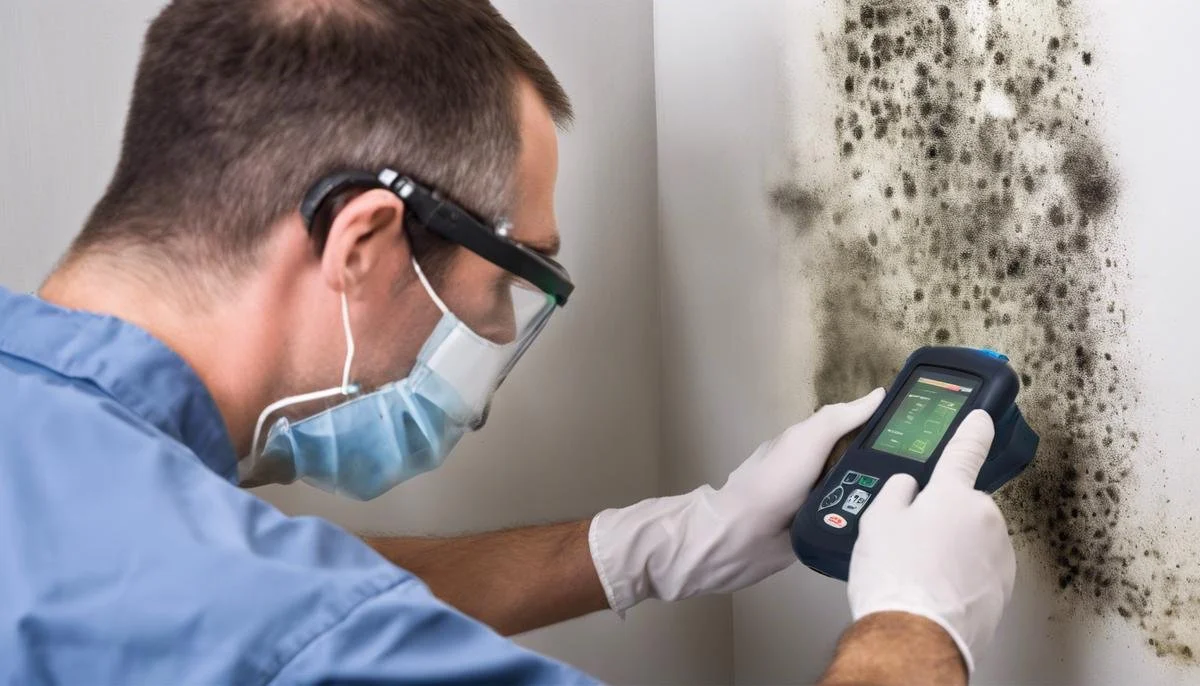Why Work With a Professional Mold Detection Company?
Mold inspection and remediation play a crucial role in maintaining a healthy living environment. By understanding the steps involved in detecting and addressing mold, individuals can take proactive measures to protect their well-being and preserve the integrity of their living spaces.
Understanding Mold Inspection
Mold inspections involve more than a superficial examination of your property's surfaces. Professionals use specialized tools, such as FLIR infrared cameras, to identify hidden sources of moisture that could promote mold growth. They thoroughly examine areas where mold spores are most likely to thrive, including:
Attics
Crawl spaces
Areas under sinks
Inspectors employ various testing methods, such as air sampling and swab tests, to accurately assess the extent of mold presence and identify specific mold types and concentrations. By upholding a no-conflict-of-interest principle, inspectors provide unbiased information about your home's condition, focusing solely on your well-being and the integrity of your property.
Benefits of Hiring a Professional Mold Detection Company
Professional mold detection companies offer numerous benefits due to their expertise and specialization. These professionals are trained to identify both visible and hidden mold growth, ensuring that no area of concern is overlooked. They possess extensive knowledge of different mold types and the risks they pose, allowing for accurate assessments and appropriate remediation strategies.
Mold detection companies adhere to strict ethical standards and operate with transparency, prioritizing the homeowner's health and safety. They utilize advanced diagnostic tools and methods, such as environmental monitoring and sophisticated testing, to provide comprehensive insights into the extent of mold proliferation.
Mold Testing and Sample Analysis
When mold is suspected, inspectors collect air, surface, and bulk samples using specialized equipment to ensure accuracy and prevent contamination. These samples are sent to a third-party laboratory for analysis, where technicians employ techniques like direct microscopic examination and culturing to identify the type and quantity of mold present. Direct examination allows immediate identification of mold spores and their concentration, while culturing determines which molds are actively reproducing.
Lab analysts compile detailed reports specifying the mold species identified and their concentrations, assisting professionals in devising precise, tailored remediation strategies. The impartiality provided by an external lab ensures that homeowners receive accurate, unbiased data to guide their next steps toward a mold-free, healthy living space.
Creating a Mold Remediation Plan
After the completion of mold inspection and testing, creating an effective remediation plan is crucial. This plan begins with understanding the specific mold types, locations, and extent of growth identified during the inspection process. Certified mold remediation specialists devise targeted actions to remove the present mold and correct underlying moisture issues to prevent future growth.
This may include recommendations for:
Structural repairs
Improving ventilation
Altering HVAC systems to optimize indoor air quality and humidity levels
During remediation, containment and cross-contamination prevention measures are established to avoid spreading mold spores to unaffected areas. Communication with the homeowner or occupant throughout the process is essential, providing updates, expectations, and necessary modifications to living arrangements during extensive work.
Understanding the Health Risks of Mold
Exposure to mold in living or working environments poses various health risks. Some individuals may experience mild reactions, such as sneezing or a runny nose, while others, particularly those with asthma or respiratory conditions, may face more severe issues like increased wheeziness or shortness of breath. Prolonged mold exposure has been linked to the development of respiratory infections, even in previously healthy individuals.
Certain types of mold, such as Stachybotrys chartarum, produce mycotoxins that can lead to chronic fatigue, headaches, nausea, and in severe cases, neurological damage or immune system suppression. Identifying the signs of mold exposure early and taking swift action through thorough inspection and testing is critical to mitigate these health risks.
Professional mold inspection and remediation are essential for ensuring a safe and healthy living environment. By identifying and addressing mold growth, experts help homeowners and occupants maintain homes that are free from the potential hazards associated with mold exposure.
Contact Us Today!
Are you concerned about the presence of mold in your home or business? Don't let mold jeopardize the health and safety of your indoor environment. At Mold Detection Southern California, we specialize in providing comprehensive mold detection and inspection services to clients across the region.
Our team of experienced professionals utilizes state-of-the-art equipment and proven techniques to accurately detect and assess mold growth in residential and commercial properties. Whether you're experiencing visible signs of mold or suspect hidden mold contamination, we're here to help.

